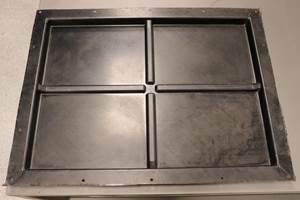Airbus CEO outlines short- and long-term goals
Guillaume Faury says recovery of commercial passenger air travel is coming, and he wants to position Airbus to be ready to serve when that day arrives.

Source | Airbus
Airbus (Toulouse, France) CEO Guillaume Faury, during an April 29 earnings call, assessed the company’s current situation and prospects for long-term growth in the wake of the nearly total global shutdown of commercial passenger air travel, caused by the coronavirus pandemic.
Faury said first that “our industry is now facing its gravest crisis in history,” and noted that the dramatic decline in commercial passenger air travel — and the reduced demand for new aircraft that followed — has compelled the company to take “prudent steps to insure the future of Airbus.” (Click here for Q1 2020 results for Airbus and Boeing.)
The company, he said, is in the midst of trying “to match production with our best understanding of this new demand, and trying to meet our customers’ expectations.” The first step in that process occurred on April 8 when Airbus announced across-the-board production rate cuts of about one-third. The company will reduce narrowbody production from 60 per month to 40 per month. It will also manufacture two A330s and six A350s per month.
Now through early June, Faury said, Airbus will continue to work with airlines and aircraft lessors to understand their aircraft needs, their financial status and how those two variables will affect Airbus’s order books. For the most part, Faury said, Airbus has managed to avoid outright order cancellations, in favor of order deferments. That said, Faury admitted that the company has “limited visibility” about how passenger air travel will return. “We are very carefully managing our ability to understand all of the implications,” he said.
Faury said he expects Airbus delivery of new aircraft, which began a downward trend in Q1 2020, will continue to be low in Q2 and Q3 2020. Following the summer, however, he expects the company will be on firmer footing and begin on a path to more a “normal” delivery pace.
However Airbus’s recovery coalesces, Faury said he expects the company’s narrowbodies — the A220, A320, A321 XLR — will lead the way as the return of domestic air travel is expected to precede international air travel. For that reason, Airbus anticipates a 3-5-year recovery window, with the A330 and A350 recovery expected closer to the 5-year end of that range. “Our product range is the right one for growing out of the crisis,” he said.
Regarding the Airbus supply chain, Faury noted that it is a complex and interdependent ecosystem vital to the company’s health and that “we need and will navigate this crisis together with them [suppliers].”
Looking ahead, Faury expects, by June, to have a clearer sense of the company’s customers’ positions and requirements; he hopes, at that time, to be able to offer more substantive guidance about how Airbus will adapt its delivery schedule. Another production rate cut is possible, he said. Other projects and efforts have also been put on hold, including expansion of the A320 final assembly line (FAL) in Toulouse and decarbonization efforts.
Ultimately, however, Faury said Airbus remains convinced that passenger air travel will return. The question, he said, is when and how. In the short term, he said, Airbus will be cautious and prudent, but long term he wants to position the company to act quickly to support the return of commercial air passenger travel. “There will be a ramp-up again,” he stated. “The question is when and at what pace. After the crisis, I am convinced people want and will still need to fly.”
Click here to download the Airbus Q1 2020 earnings report.
Related Content
UniFORM: High-quality, high-complex EV battery enclosures at low cycle times, low tooling costs
Stellantis subsidiary CpK Interior Products Inc. recently completed a design challenge to prove out its vacuum-assisted wet compression molding process for CFRP battery trays.
Read MoreMicrowave heating for more sustainable carbon fiber
Skeptics say it won’t work — Osaka-based Microwave Chemical Co. says it already has — and continues to advance its simulation-based technology to slash energy use and emissions in manufacturing.
Read MoreJEC World 2023 highlights: Innovative prepregs, bio-resins, automation, business development
CW’s Jeff Sloan checks in with JEC innovations from Solvay, A&P, Nikkiso, Voith, Hexcel, KraussMaffei, FILL, Web Industries, Sicomin, Bakelite Synthetics, Westlake Epoxy and Reliance Industries.
Read MoreSuCoHS project: Advancing composite solutions for parts with high thermal and mechanical loads
New materials, structural concepts and manufacturing using sensors for composites that resist fire, temperature and loads while providing weight and cost savings versus metals.
Read MoreRead Next
Composites end markets: Energy (2024)
Composites are used widely in oil/gas, wind and other renewable energy applications. Despite market challenges, growth potential and innovation for composites continue.
Read MoreCW’s 2024 Top Shops survey offers new approach to benchmarking
Respondents that complete the survey by April 30, 2024, have the chance to be recognized as an honoree.
Read MoreFrom the CW Archives: The tale of the thermoplastic cryotank
In 2006, guest columnist Bob Hartunian related the story of his efforts two decades prior, while at McDonnell Douglas, to develop a thermoplastic composite crytank for hydrogen storage. He learned a lot of lessons.
Read More


























